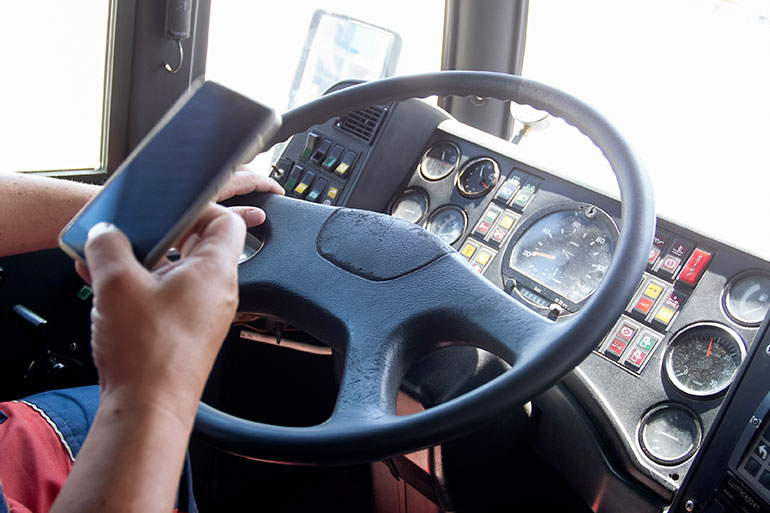

Distracted driving is one of the leading causes of crashes involving commercial vehicles. If something takes your attention from the road, then you’re most likely driving distracted. It’s not just drivers who should pay attention. Carriers should focus on minimizing this problem among their drivers.
The National Highway Traffic Safety Administration (NHTSA) lists types of distracted driving: talking or texting on a phone, eating and drinking, or adjusting the stereo or navigation system. Distractions can come from outside the cab as well. Billboards and other advertisements, buildings, and people can also cause driver inattention long enough to cause a crash or near-crash.
The consequences are serious. The Federal Motor Carrier Safety Administration (FMCSA) reports sobering figures. In 2018:
“Distraction/inattention” was the second most common driver-related factor contributing to fatal crashes. “Speeding of any kind” was number one.
The FMCSA comes down harshly on drivers who text while operating a commercial motor vehicle (CMV). Drivers can be fined up to $2,750 and employers up to $11,000 if they allow or require their drivers to use a hand-held communications device for texting while driving. Violations can negatively affect Safety Measurement System (SMS) results, carrying the maximum severity weight. If drivers’ inattentiveness caused a crash, criminal charges could be filed as well.
I worked more than two decades as a Tennessee Highway Patrol state trooper and captain directing the administration’s Commercial Vehicle Enforcement division. During my tenure, I came upon many types of distracted driving while investigating accidents or performing Department of Transportation (DOT) inspections.
Often, the signs were visible when I opened the truck cab, where I could see a variety of items within drivers’ grasp of their wheel. By themselves, the things were innocent: a cell phone, map, laptop computer, drinks, food, shipping papers, and books. But when drivers try to multitask while maneuvering a 35,000-pound truck, the situation becomes a serious matter – and potentially one of life or death.
When conducting DOT inspections, the distractions I found became teachable moments with drivers. I had countless conversations about the risks and consequences of distracted driving. Now, in my roles as director and vice president of safety for motor carriers, I continue to advocate against distracted driving. I’ve launched company safety rules and policies that, hopefully, will prevent drivers from operating a commercial vehicle while distracted. I also help drivers understand the dangers of not focusing on the road ahead of them.
Most insurance companies expect motor carriers to have rules and policies about distracted driving. But these documents do little unless they’re enforced and supported throughout the organization. Carriers need to take a proactive, preventive approach to distracted driving. To aid this, here are nine ways to instill a company culture where drivers know distracted driving will not be tolerated:
By following these recommendations, carriers are in a better position to curb distracted driving among their drivers, which saves companies money and those on the road are kept a bit safer.
InfoStream’s manages the qualification and compliance processes from application through post-hire, while keeping you updated. Our focus includes: DQ File Management, Annual Safety Review, Training and Certification, Log Violation Management, Roadside Inspection Management, CSA Management, DVIR Management, and Vehicle File Management.
Steve Binkley is a safety professional with 38 years of experience, including 26 years with the Tennessee Highway Patrol, where he retired as captain of the Commercial Vehicle Enforcement division. He’s also worked as an associate instructor with the Federal Motor Carrier Safety Administration National Training Center and as vice president of safety at a large-tier motor carrier. Today, Steve serves as a safety and compliance consultant, instructor at the North American Transportation Management Institute, and speaker.








